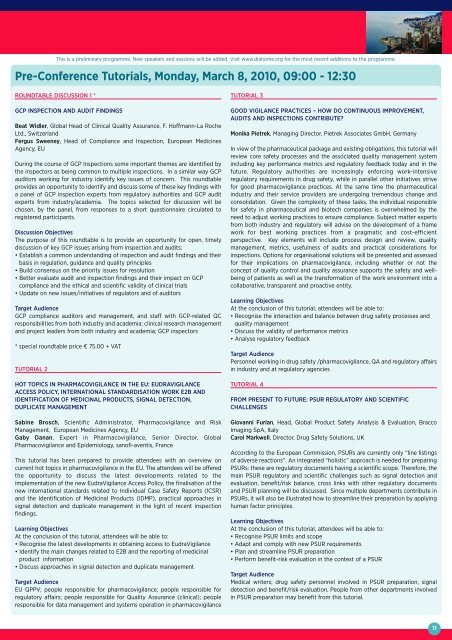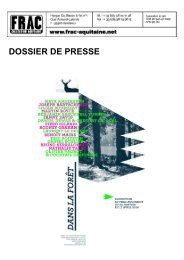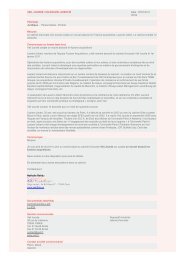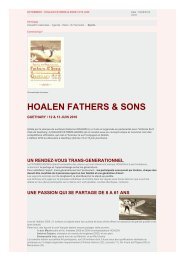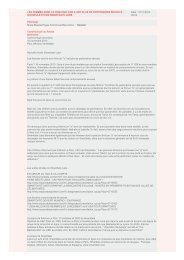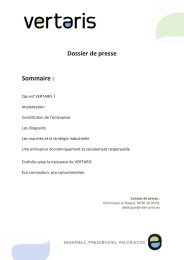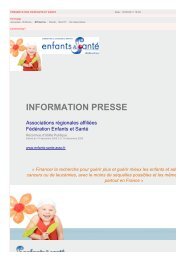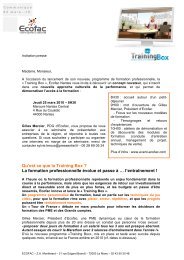Pre-Conference Tutorials, Monday, March 8, 2010, 09:00
Pre-Conference Tutorials, Monday, March 8, 2010, 09:00
Pre-Conference Tutorials, Monday, March 8, 2010, 09:00
Create successful ePaper yourself
Turn your PDF publications into a flip-book with our unique Google optimized e-Paper software.
<strong>Pre</strong>-<strong>Conference</strong> <strong>Tutorials</strong>, <strong>Monday</strong>, <strong>March</strong> 8, <strong>2010</strong>, <strong>09</strong>:<strong>00</strong> - 12:30<br />
ROUNDTABLE DISCUSSION 1 *<br />
This is a preliminary programme. New speakers and sessions will be added. Visit www.diahome.org for the most recent additions to the programme.<br />
GCP INSPECTION AND AUDIT FINDINGS<br />
Beat Widler, Global Head of Clinical Quality Assurance, F. Hoffmann-La Roche<br />
Ltd., Switzerland<br />
Fergus Sweeney, Head of Compliance and Inspection, European Medicines<br />
Agency, EU<br />
During the course of GCP Inspections some important themes are identified by<br />
the inspectors as being common to multiple inspections. In a similar way GCP<br />
auditors working for industry identify key issues of concern. This roundtable<br />
provides an opportunity to identify and discuss some of these key findings with<br />
a panel of GCP inspection experts from regulatory authorities and GCP audit<br />
experts from industry/academia. The topics selected for discussion will be<br />
chosen, by the panel, from responses to a short questionnaire circulated to<br />
registered participants.<br />
Discussion Objectives<br />
The purpose of this roundtable is to provide an opportunity for open, timely<br />
discussion of key GCP issues arising from inspection and audits:<br />
• Establish a common understanding of inspection and audit findings and their<br />
basis in regulation, guidance and quality principles<br />
• Build consensus on the priority issues for resolution<br />
• Better evaluate audit and inspection findings and their impact on GCP<br />
compliance and the ethical and scientific validity of clinical trials<br />
• Update on new issues/initiatives of regulators and of auditors<br />
Target Audience<br />
GCP compliance auditors and management, and staff with GCP-related QC<br />
responsibilities from both industry and academia; clinical research management<br />
and project leaders from both industry and academia; GCP inspectors<br />
* special roundtable price € 75.<strong>00</strong> + VAT<br />
TUTORIAL 2<br />
HOT TOPICS IN PHARMACOVIGILANCE IN THE EU: EUDRAVIGILANCE<br />
ACCESS POLICY, INTERNATIONAL STANDARDISATION WORK E2B AND<br />
IDENTIFICATION OF MEDICINAL PRODUCTS, SIGNAL DETECTION,<br />
DUPLICATE MANAGEMENT<br />
Sabine Brosch, Scientific Administrator, Pharmacovigilance and Risk<br />
Management, European Medicines Agency, EU<br />
Gaby Danan, Expert in Pharmacovigilance, Senior Director, Global<br />
Pharmacovigilance and Epidemiology, sanofi-aventis, France<br />
This tutorial has been prepared to provide attendees with an overview on<br />
current hot topics in pharmacovigilance in the EU. The attendees will be offered<br />
the opportunity to discuss the latest developments related to the<br />
implementation of the new EudraVigilance Access Policy, the finalisation of the<br />
new international standards related to Individual Case Safety Reports (ICSR)<br />
and the Identification of Medicinal Products (IDMP), practical approaches in<br />
signal detection and duplicate management in the light of recent inspection<br />
findings.<br />
Learning Objectives<br />
At the conclusion of this tutorial, attendees will be able to:<br />
• Recognise the latest developments in obtaining access to EudraVigilance<br />
• Identify the main changes related to E2B and the reporting of medicinal<br />
product information<br />
• Discuss approaches in signal detection and duplicate management<br />
Target Audience<br />
EU QPPV; people responsible for pharmacovigilance; people responsible for<br />
regulatory affairs; people responsible for Quality Assurance (clinical); people<br />
responsible for data management and systems operation in pharmacovigilance<br />
TUTORIAL 3<br />
GOOD VIGILANCE PRACTICES – HOW DO CONTINUOUS IMPROVEMENT,<br />
AUDITS AND INSPECTIONS CONTRIBUTE?<br />
Monika Pietrek, Managing Director, Pietrek Associates GmbH, Germany<br />
In view of the pharmaceutical package and existing obligations, this tutorial will<br />
review core safety processes and the associated quality management system<br />
including key performance metrics and regulatory feedback today and in the<br />
future. Regulatory authorities are increasingly enforcing work-intensive<br />
regulatory requirements in drug safety, while in parallel other initiatives strive<br />
for good pharmacovigilance practices. At the same time the pharmaceutical<br />
industry and their service providers are undergoing tremendous change and<br />
consolidation. Given the complexity of these tasks, the individual responsible<br />
for safety in pharmaceutical and biotech companies is overwhelmed by the<br />
need to adjust working practices to ensure compliance. Subject matter experts<br />
from both industry and regulatory will advise on the development of a frame<br />
work for best working practices from a pragmatic and cost-efficient<br />
perspective. Key elements will include process design and review, quality<br />
management, metrics, usefulness of audits and practical considerations for<br />
inspections. Options for organisational solutions will be presented and assessed<br />
for their implications on pharmacovigilance, including whether or not the<br />
concept of quality control and quality assurance supports the safety and wellbeing<br />
of patients as well as the transformation of the work environment into a<br />
collaborative, transparent and proactive entity.<br />
Learning Objectives<br />
At the conclusion of this tutorial, attendees will be able to:<br />
• Recognise the interaction and balance between drug safety processes and<br />
quality management<br />
• Discuss the validity of performance metrics<br />
• Analyse regulatory feedback<br />
Target Audience<br />
Personnel working in drug safety /pharmacovigilance, QA and regulatory affairs<br />
in industry and at regulatory agencies<br />
TUTORIAL 4<br />
FROM PRESENT TO FUTURE: PSUR REGULATORY AND SCIENTIFIC<br />
CHALLENGES<br />
Giovanni Furlan, Head, Global Product Safety Analysis & Evaluation, Bracco<br />
Imaging SpA, Italy<br />
Carol Markwell, Director, Drug Safety Solutions, UK<br />
According to the European Commission, PSURs are currently only “line listings<br />
of adverse reactions”. An integrated “holistic” approach is needed for preparing<br />
PSURs: these are regulatory documents having a scientific scope. Therefore, the<br />
main PSUR regulatory and scientific challenges such as signal detection and<br />
evaluation, benefit/risk balance, cross links with other regulatory documents<br />
and PSUR planning will be discussed. Since multiple departments contribute in<br />
PSURs, it will also be illustrated how to streamline their preparation by applying<br />
human factor principles.<br />
Learning Objectives<br />
At the conclusion of this tutorial, attendees will be able to:<br />
• Recognise PSUR limits and scope<br />
• Adapt and comply with new PSUR requirements<br />
• Plan and streamline PSUR preparation<br />
• Perform benefit-risk evaluation in the context of a PSUR<br />
Target Audience<br />
Medical writers; drug safety personnel involved in PSUR preparation, signal<br />
detection and benefit/risk evaluation. People from other departments involved<br />
in PSUR preparation may benefit from this tutorial.<br />
11


